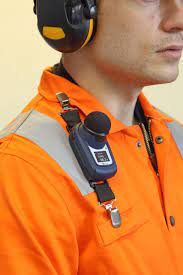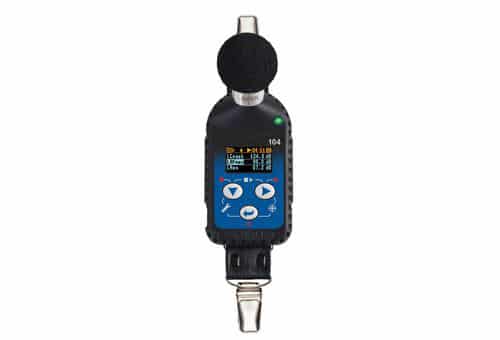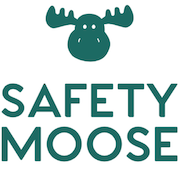You may not be fully aware but Thailand does have some strict OHS laws regarding Occupational Noise protection and reporting that must be followed. This article breaks down the key points in the law and what your site needs to do to comply with the Labour law.
The law on hearing conservation is called the Ministerial Regulation on the Prescribing of Standards for Administration and Management of Occupational Safety, Health and Environment in Relation to Heat, Light and Noise (B.E. 2549 or 2006 in Gregorian years).
This article will only focus on the issue of the Occupational Noise aspect of the law and I will cover the other requirements in another article.
Key Takeaways
- You are required to conduct a study for occupational noise every year and submit the results to the Ministry of Labour.
- Occupational Noise studies must be carried out by qualified persons, using a prescribed format.
- Workplaces with occupational noise levels between 85-140db must have mitigations in place to reduce occupational exposure.
- Reports must be kept for at least 5 years on file, should an inspector from the Labour Department wish to see results.
- For noisy work environments, you are required to provide the correct hearing protection PPE and keep it well maintained.
- A written Hearing Conservation Program is required for worksites deemed high noise environments.
- Training on Hearing Conservation for employees is required and you will need to have evidence of training on hand.
- As part of your annual Health Surveillance Program, you will be required to include Audiometrystudies for your employees.
Time Weighted Average of Noise Exposure
In Clause 8 of the law, the employee will need to control the Time Weighted Average (TWA) of exposure to occupational noise in each area.
The TWA shows a worker’s daily exposure to occupational noise (normalized to an 8 hour day), taking into account the average levels of noise and the time spent in each area.
Under Thai Law, there is a Table (Table 6) that is calculates those TWA figures but they also stipulate a criteria and method for measuring noise levels (“in accordance with the announcement issued by the Director-General.”).
The Thai legal regulations are closely aligned with NIOSH in the USA (National Institute for Occupational Safety & Health). The “NIOSH Recommended Exposure Limit (REL) for occupational noise exposure is 85 decibels, weighted as an 8-hour time-weighted average (85 dBA as an 8-hr TWA) using a 3-dB exchange rate. Exposures at or above this level are hazardous.
Conducting an Occupational Noise Study
The occupational noise study gets conducted using Sound Level Meters. These are either fixed in place for a period of time or worn on the body of a worker over a period of time, using Dosimeters.

The personal Dosimeter unit gets pinned on a worker’s shoulder to measure sound close to the ear. The Dosimeter will measure occupational noise levels and the noise dose % during the work shift. It also calculates the time-weighted average (TWA) of occupational noise.
When the data gets downloaded to a computer it provides a graph of the sound levels throughout the shift. The analyst then can view the times and exposure levels of noise during the day.
During the test procedure, the researcher places noise dosimeters at strategic locations to measure noise. These get placed on tripods and noise gets monitored over a period of time (8-12 hours).

Companies such as SGS carry out such studies. The report provided identifies high noise areas and indicates these as decibel levels compared to allowable levels.
In Clause 9 of the regulation, it stipulates that work areas over 140db :
…the accumulated volume of the impact or impulse noise exceeding the standard as prescribed in Table 6 annexed to this Ministerial Regulation” must be identified and that work must stop until noise level is improved or “remedied”.
Clause 9 of the Ministerial Regulation on the Prescribing of Standards for Administration and Management of Occupational Safety, Health and Environment in Relation to Heat, Light and Noise
Occupational noise over 140db will damage your hearing, even under short durations (possibly permanently). To put this into context, this level of noise would be louder than an aircraft-carrier deck. Pretty noisy I would say. Over 150db and standing within 25m of such noise, would cause an unprotected eardrum to burst.
Controlling Occupational Noise
The regulation (Clause 10) states that workplaces with noise levels between 85-140db must reduce occupational noise exposure. This can be in the form of sound dampening equipment to reduce noise and/or selected PPE to protect the worker. The regulation also mentions that employers must take action to try to reduce the noise exposure time for workers (considering TWA).
Signage Requirements

Any work area with noise exceeding 85db must have proper signage is in place to warn workers of the hazard. Signs should be evident in all entrances to noisy areas and must be in Thai language with the pictogram.
Personal Protective Equipment
The law states that PPE must include either foam earplugs that reduce noise by not less than 15db. For ear-defenders, they must have a rating (NRR) of not less than 25db. The Thai translation may be a bit unclear here because it seems to be referring to Noise Reduction Ratings (NRR).
Check out my article on hearing protection for noisy areas requiring radio communications. I discuss options like bluetooth radio headsets.
What is the NOISE REDUCTION RATING?
A noise reduction rating is a number that indicates the level of noise that earplugs will block out. This NRR rating applies only to earplugs and earmuffs though. The rating provides PPE selectors with important data to use when comparison shopping.
NRR Ratings
The highest NRR rating for earplugs is 33 (Thai law is 15db at least). The highest available NRR rating for earmuffs is 31 (Thai law is 25db).
These NRR values state the level of noise protection available for each PPE type when worn on its own. Combining earplugs with earmuffs can offer an NRR protection level of 36.
Manufacturers produce different types of earplugs and earmuffs to reach these ratings. Generally, higher-quality devices that cost more receive a higher NRR rating.
The Thai standard seems to state an average NRR. In workplaces that use radios, there may be a need for headphones with microphones. See my article on the types of solutions available for these conditions.
Selection & Training
In Thailand, employers are responsible to identify noisy work areas and provide protection to workers. As mentioned in the previous section, selection and care of PPE are essential, but evidence of a training program is also required.
“Clause 14 The employer shall manage to have methods of selecting and using personal protective equipment by providing a training on the methods of using and maintaining of personal protective equipment, as well as the usage rules which shall be prepared systematically, and open at all times during working hours for inspection by a labour inspector.”
Compliance Reporting
To follow the law, companies must conduct a noise assessment study at least every year.
The law mentions that the study team must have a minimum level of qualifications. Be sure to check that the outsourced company has the right qualifications)
“The report shall be certified either by a degree safety officer in professional level; or a degree person who holds not lower than Bachelor Degree in Occupational Health, or equivalent degree.”.
The equipment used for noise measurements includes fixed Noise Dosemeters and Dosimeter Badges. The dosimeter badge gets worn on the body and measures noise throughout the workday.
The badges take measurements while carrying out normal work activities. Thus the usual best practice is to outsource the analysis to a 3rd party specialist like SGS. They will create a full report for your site.
After getting the report, the company must submit a copy to the Labour Department, within 30 days. The company must also keep a copy of the report at the workplace in case a Labour Inspector requests to see it.
The law also requires that any deficiencies identified in the report must get mitigated within a year. This may include solutions like signage, training, procedures, PPE, or noise dampening.
In-House Qualifications of the Person Conducting the Study
Should you prefer to conduct the study in-house, Clause 17 states that:
“any person who wishes to apply for registration as a certifier of the measurement and analysis of working conditions report shall submit an application form together with the attachment of copies of related documents to the Director-General, or to a person authorized by the Director-General. In Bangkok Metropolis, application for registration as the certifier pursuant to preceding paragraph shall be filed at the Department of Labour Protection and Welfare, the Ministry of Labour, or any other place as prescribed by the Director-General. For other provinces, the application shall be filed at the Office of the Provincial Labour Protection and Welfare.”.
The Ministry has a specific form or format for reporting that must be followed.
Health Surveillance Programs Required by Employers
Workplaces must maintain an annual health checkup program (Health Surveillance). At worksites where there are high levels of occupational noise, hearing tests and reporting are mandatory.
Audiometry tests get performed at hospitals with audiometry equipment and trained technicians. You know…the “beep test” we all hate.
You should find a vendor that can provide your OH team with a well-written analytical report. I have seen some written reports from hospitals that were not well prepared. Be sure to request a sample report so you can make better decisions on vendors.
Remember that hearing declines with age. Lifestyles are also a factor (i.e. listening to loud music with headphones for example).
Still, if the report shows a decline in audiometry results from workers exposed to high occupational noise, then this is a red flag. There needs to be more effort to protect their hearing.
Your OH team should be able to compare results to the noise studies to try to determine if there is a problem.
Medical reports must be on file for at least 5 years, should an inspector wish to review the records.

